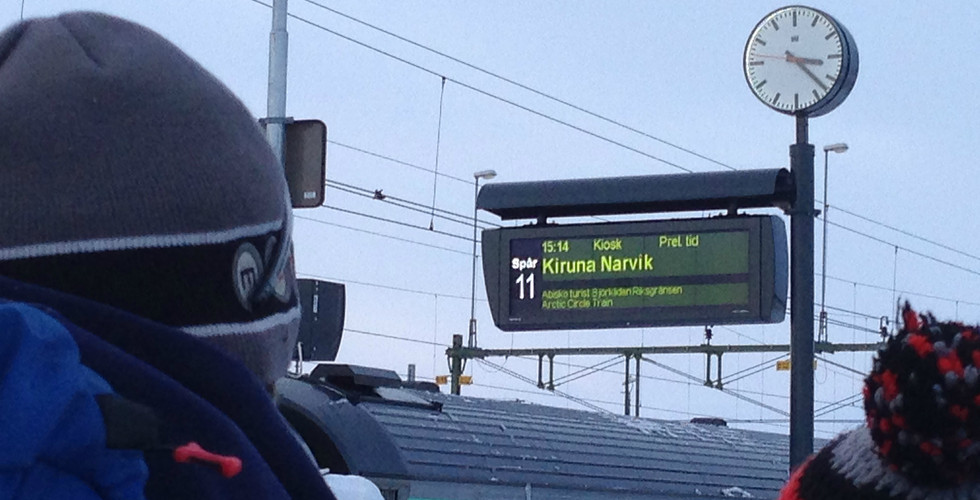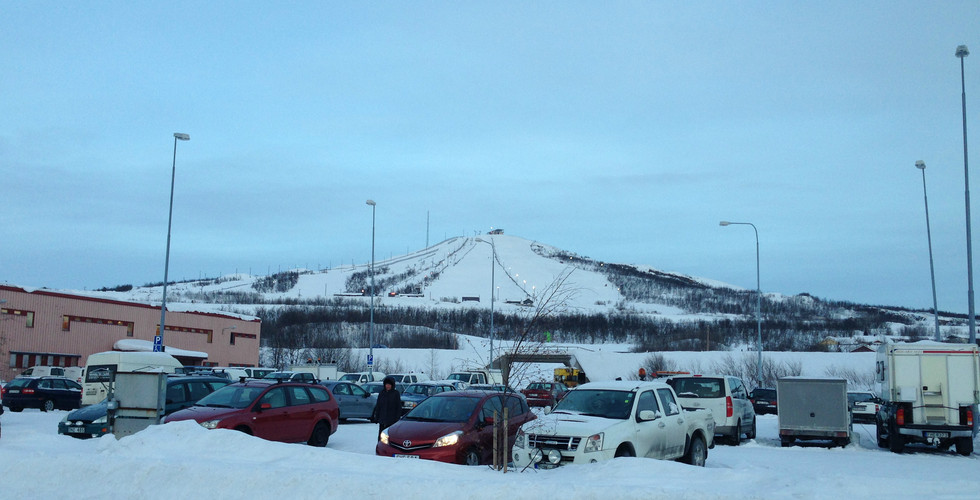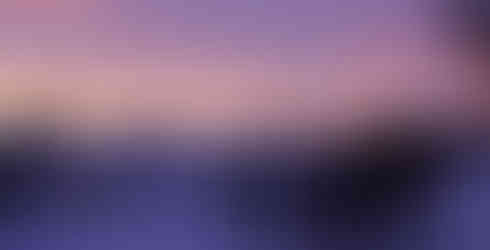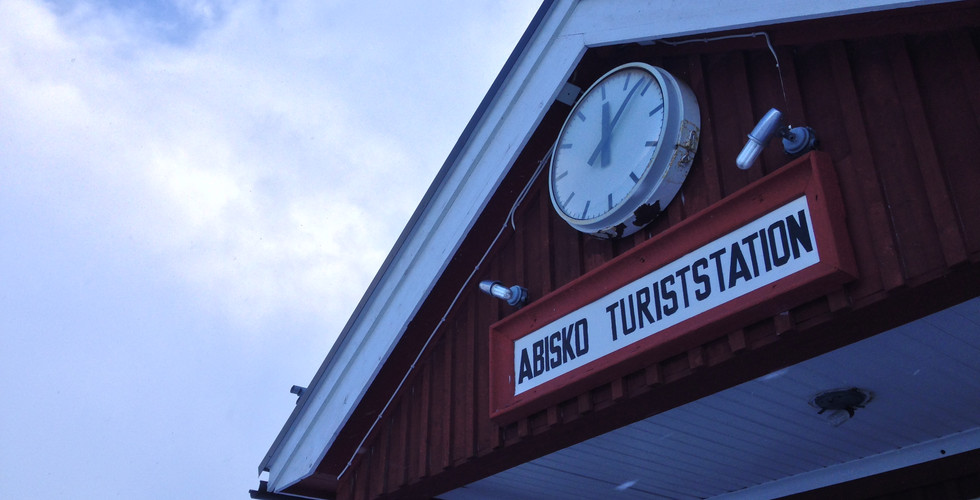Course Review: Arctic Science A
- yougoeric
- Oct 19, 2015
- 10 min read
What was the most memorable course I took at Umeå University? This is probably it.
Credits: 4.5
Term: Spring 2015
Language of Instruction: English
Study Tempo: 50%
- - - - - - - - - - - - - - - - - - - - - - - -
Self-rated Difficulty: ❄️❄️
Awesomeness: 😄😄😄😄😄
This course deals with the physics and observation of phenomena in polar regions, including ice and snow, mother of pearl clouds, Aurora Borealis, and the impacts due to climate change. The first class takes place in Umeå at the end of January, followed by a four-day trip to Kiruna and Abisko where more courses, observation and visits to research institutions will be carried out. In other words, in Arctic Science A you will go a trip with a bunch of friends (no worries if you signed up for the course alone, you will end up with plenty of friends after!), learn the underlying physics of aurora during the day, acutally see aurora(s) if the weather is not against you on those few days, have fun in the snow and stay a few nights in the Arctic Circle. This should explain the growing popularity among international students.
There aren't really prerequisites for this course as it only requires knowledge in high school physics. Everything else will be explained in class, or you will read it in assigned readings. Also, a fee is required for the student accomodation during the Kiruna meeting. Travel costs(train tickets) are not covered by the course and it advised to book early once your spot is confirmed.
First Class Meeting - 26 January 2015, Umeå
The first class meeting mainly covers the definition of Arctic Circle, magnetospheric physics, aurora physics, and some reminders for the excursion to north Sweden on Feb.15-18th.
The first assignment is due on the first day of Kiruna meeting, To complete it, we were to finish the assigned book ¨Ken Libbrecht's Field Guide to Snowflakes¨ beforehand. There are several copies in the university library(one of them being a reference copy, so you can absolutely get your hands on it if you arrive at UB in the early morning each day), if you do not intend on buying one. The author has made thorough investigation on the shapes of snow crystals and how they form under different temperature and humidity. Kenneth Libbrecht is a professor of physics at the California Institute of Technology, and he has an amazing website dedicated to snow crystals. Check it out here!
Northern Sweden - 15 February 2015, Umeå -> Kiruna
We got up beofore 6am to catch the northbound train at Umeå Östra(East Station). It is a mainline train station close to the University, apart from the Centralstation located downtown.
The sunrise happened gradually. As the train slid through the boundless darkness of the night, the sky was slowly illuminated by a rich fusion of orange, pink and yellow. First everything was a faint purplish pink. Steadily it was outshined by golden orange lights.
The train is a real life ¨Polar Express¨. We had to change trains at Boden, and it took a little over 8 hours to get to Kiruna at 3pm.
Kiruna is the nothernmost town in Sweden Sitting at 67°51′N, about 145 kilometers north of the Arctic Circle, the city is home to about 18,000 inhabitants. Mining industry plays an important role in the history of Kiruna. The city has moved geographically through time as the old city centers became undermined. One of the photos above shows a mine in the distance.
Our first course in Kiruna was about snow layers. After some theoretical introduction in the classroom, Dr. Carol Norberg handed us tools for the outdoor "snow exercise": all kinds of shovels, magnifiers, rulers, etc. and into the snow we went! Our first goal was to search for an undamaged snow area. We would then start digging into the snow and try to identify the snow layers. We probably looked pretty ridiculous to people who passed by!
The coldness in Kiruna was prominent, yet not at all unbearable after being used to the Umeå weather. Twilight always looked fabulous at the latitude though. Our only source of food that night was the ICA within walking distance. Yet we did get to see some faint northern light at the back of our hostel.
Northern Sweden - 16 February 2015, Kiruna
On the second day, we started off by visiting the Swedish Institute of Space Physics(Institutet för rymdfysik, IRF).
We had some time to look at the research papers we were to choose from to do a synopsis of. Then the class was split into two groups and went on a tour of the institute. The staff researchers kindly exaplin all the undergoing projects, although it was kinda impossible to understand everything. It was interesting to know how IRF and other countries cooperated to launched satellites into space. Each project takes a matter of years to plan, develope, and readjust, while a team at IRF could be responsible for only a small part of the whole.
Here is a picture taken on the roof of IRF, beside me there were all kinds of instruments scientists use for observation.
The following class was extremely important and practical to us: Living in a cold climate. It turns out that, the wind velocity instead of the temperature is the defining factor for heat loss in extremely cold weathers, and it is never a good idea to venture alone outdoors in the arctic environment. Our lecturer Dr. Fredrik Kjellberg was a senior physician at Kiruna Hospital. He talked about the miraculous survival of a colleague, after a prolonged period under hypothermia. Recently, I happened to readed about a similar-sounding case on Reader's Digest.

We had our lunch at the IRF cafeteria after class. We could choose to purchase the buffet lunch(for 80kr, if I remembered it correctly), if we would like to have something besides the bread or sandwich we brought with us. They have nice food for scientists here ;-)
As I was siting next to Dr. Carol Norberg on our way to the Ice Hotel, she told me that there was a plan to visit the Volvo factory, however the two sides did not reach an agreement. Too bad.
The Ice Hotel is an attraction in Jukkasjärvi. According to our guide, the ice hotel is entirely made of ice from the adjacent Torne river. Every year, ice is carved out of Torne river as winter approaches, and the ice hotel is built from the ground up. All its glory and the hardwork however, is predestined to last a few months only. As spring passes, the ice hotel melts to water and returnes to the river, which is also what it is made of. This is its circle of life. What is borrowed from nature will be given back to nature.
It is amazing how the ceiling, walls and every pillar around us is made of ice. I've never been in an igloo(one of the very first words starting with "i" I learned) before in my life, but I guess this is not far from it. There are dozens of rooms in the ice hotel, each contructed and decorated in a different theme. Every year, designers from all over the world send in potential ideas for new room designs. And there were couples who flew all the way from America to stay in one of them. The ice arts and decorations are standing evidences that the possibilities with ice is limitless through manipulation of its shape, transparency, reflectivity, pattern, and so on. Ice is inanimate yet capable of depicting living nature. Ice could emulate warmth when aided by light.
Drinks are served in glasses made of ice at the ice bar, also made of ice. There was also an ice church which opens on Christmas day every year. Undoubtedly it has become a special place where many proposed and married to their loved ones.
The sun was almost set when we left the ice hotel at 16:30. After the bus took us back to the hostel, a few of us ventured downtown to have a look at the Kiruna city center, and then spent the first half of the evening cooking dinner together. We were really anticipating the aurora as the forecast appeared hopeful for the night. One thing worth noting though: bring a set of UNO or poker, and you and your friends will never have to worry about getting bored. The fun continued in the common room until a possible sighting of aurora was reported. All of us rushed out of the house at once.
Here is a GIF file I made to simulate the real time view:

The thing about northern lights is you don't know how long it's going to last. It could be a matter of seconds, or well over ten minutes, depending on a few things. First, there is the essential Kp index, a scale used to characterize the magnitude of geomagnetic activity. Yet the Kp index doesn't tell you where on the map will auroras appear for certain. Kp index lines are estimated from pass experiences. After isolating the variable of Kp index, there is the uncontrollable factor of weather. A good visibility depends largely on local weather. Low clouds are particularly obstructive. So, aurora hunters' best bet would be somewhere dark and cloudless and close to the polar regions between the time of October and March.
This time it was strong enough to even be captured by my phone camera(the animated GIF above). The photo taken with a DSLR below shows green as well as red aurora.

It was the first time for many of us to see the northern light. We gladly stayed out until we could hardly feel our fingers in the cold.
Northern Sweden - 17 February 2015, Kiruna -> Abisko
After an exhilarating night, we managed to stay awake during class in the morning. An introduction was made on the "Mother of Pearl Clouds", a.k.a. "Polar Stratospheric Clouds", another phenomenon near the polar region. Very little water vapor exists in the stratosphere, making it really hard to form clouds. It is however possible in the extreme cold of polar winters. And the appearance of these mother of pearl clouds are quite particular, resembling a pearl-like texture, therefore the name.
Our next stop is Abisko(68°21′N). It is about 100 km northwest of Kiruna, in the province of Lappland near the Norweigian border. It wasn't a long drive, but it was hard to tell things apart outside the bus window as it was almost completely white. We had an lecture at the Abisko Scientific Research Station on the climate's impact on the arctic environment.

Abisko is home to the Abisko National Park and Kungsleden(The King's Trail), a place for hiking and real adventures. The STF hostel across from the Abisko Tourist Train Station became our "base camp" of exploration. As you can see, the visibility wasn't exactly good after sunset, and it was too cold to stay outside for more than 10 minutes. Later that evening, together the entire class had a nice candlelight dinner with an arctic view.
We gathered at the reception in our warmest clothes at 21:00 for an outdoor aurora observation. We followed one another into the snow carefully, guided only by the flashlight from the person ahead of us. It seemed like 20-minutes of walking before we reached an open space unobstructed by any object kilometers out. Turns out we had made our way to a frozen lake! Facing the lake, there were dim lights from distant households on our right, and on our left the wild nature was masked by the untouchable night, further beyond this lake. A cabin stood on the shore we came from, glowing with warm lights against this arctic wintriness. With the icy surface feeling rock-solid beneath our boots, we ventured to lie down on the ground beside one another. And the amount of stars we were able to take in perhaps exceeded the total we've seen in our life.
The thin film of clouds were backlit by a faint, mystical green, but the green As we traced our way back, we could see people doing sauna in the cabin. A group of them suddenly ran out in bathing suits and jumped straight into the snow. It was kind of hard to believe as I could hardly feel my feet against my boots already. The cold had seeped in as usual after an hour of tramping around in the snow, making it quite a struggle between staying out to wait for the aurora and going back to make sure my feet don't need to be chopped off for being badly frostbitten.
I'm so glad I didn't back out. There were four of us at the time, I think. We were wondering if we had lost our way, as the huge mountain in front of us was the only (lousy) landmark in the dark. And out of nowhere, streaks of lights emerged in the sky. At first, they seemed too bright, opaque and white to be the smokey, barely-there greenish northern lights we had seen before. In the past, we often had to focus on a faint pattern we notice in the sky when facing north on a forecasted night, and imagine it being an aurora before realizing that it actually is one. Most of the time, a weak northern light looks like a stream of smoke travelling across the night sky; a band of thin cloud when it's a weaker one, which makes it hard to tell if it moves at all. Usually the fastest way to verify it is to grab your camera, boost up its ISO to the highest and take a test shot to see if the cloud appears green. But this time there was unmistakably something there. It was alive and flowing, changing its shape in an elegant manner. It was a legitimate aurora.
How does a person react to this? Humans are programmed to show astonishment upon experiencing something they didn't expect. But this was not one of those situations. Seeing these lights dancing above us, an apparition of the nature we know and live in was beyond incredible. It was a spiritual experience.
So, we began cheering and yelling to the night sky, praising the celestial event and heavenly nature.

In the end, my ice-cold feet turned out to be just find, and I did not miss a one-in-a-life-time scene. Oh, and sorry for the out-of-focus photos. It was bloody hard to manually focus in the dark.
(Moral of the story: bring good gear and wear warm boots.)
Northern Sweden - 18 February 2015, Abisko -> Umeå
We had our one last lecture at the dining hall the next morning. A member of the avalanche rescue team gave us a lesson on how avalanches are caused and important signs to look out for. Serious info.
After stocking up some food for the 9 hour train ride back to Umeå, most of us hopped on the train at noon, some others journeyed west to Norway.
Swedish trains are modern and comfortable. It had a bistro car where we could go get food and drinks when we're hungry or just bored. It was pretty fun to be stuck on a train with friends. All the chatting, movie watching and buying microwaved pizzas at the bistro car become memorable times. It was one hell of a trip.
This experience will probably be different now that SAS has established a route betweem Umeå and Kiruna. Perhaps a party in the air.









































































Comments